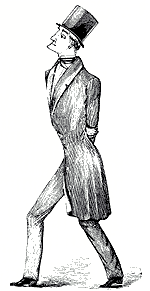(Thanks to Jonathan Shipley of A Writer’s Desk for the guest post. -ed.)
“Into the hands of the Almighty God I commit my soul, relying on his mercy … and die an unworthy member of the Presbyterian Church, in the 29th year of my age.”
These were the last words of Rachel Wall, on this date in 1789. It was she, whom the Presbyterians must have frowned upon mightily, who was the last woman hanged in Massachusetts and, further, the first noted American-born female pirate.
No walking the plank for her. She was hanged, proven guilty of robbery, by Sheriff Joe Robinson on a beautiful fall day. Her downfall after a brief career with her husband of piracy, thievery and murder? A pretty bonnet.
Rachel, around the age of 16, loved the water. The boats and dockyards always spoke to her. Born on a farm outside of Carlisle, Pennsylvania, it bored her; so, while in Harrisburg, she went to the docks. She was harassed, harangued and attacked by a group of girls. Enter George Wall –- a fisherman and former privateer who served in the Revolutionary War. He saved Rachel from the girls and Rachel, against her devout Presbyterian parents, eloped with him.
They went to Boston where she stayed on as a servant girl while George plundered. He convinced her to join him and his cohorts in piracy. It proved successful, for a time.
Their plan was this: anchor near an island during a storm. When it passed, make their boat appear damaged. When another boat came, Rachel would shout for help. Help would come. They’d then murder the would-be rescuers, steal their valuables, and sink their ship. Those awaiting the unfortunate sailors would think simply that the storm had taken them away, not Mr. and Mrs. Wall. Between 1781 and 1782 they captured 12 boats, murdered 24 sailors and kept around $6,000 in booty for themselves.
Another Brick in the Wall
This plan worked quite well, until September of 1782 when one storm proved too powerful. George Wall and his motley crew drowned. The only survivor was Rachel. She returned to Boston and in the remaining years of her life she became a maid, a petty thief, and possibly a prostitute, stealing from johns as they slept.
Then, the bonnet incident.
One day Margaret Bender, a 17-year-old Bostonian, was minding her own business, walking down the street, a pretty bonnet affixed to her head. Wall, seeing said bonnet, pushed Bender down, stole the bonnet and then tried to rip out the girl’s tongue. Wall ran from the police when they were summoned. She was caught, put in jail and tried on September 10, 1789 for robbery (she copped to her piratical career, but claimed she had never killed anyone). Less than a month later, she hung from the gallows.
Part of the Themed Set: Women Who Kill.
On this day..
- 1980: Necdet Adalı and Mustafa Pehlivanoğlu, September 12 coup sacrifices - 2020
- 1946: Walter Grimm and Karl Mumm, judicial murderers - 2019
- 1852: Adam Wimple, his executioner's lodger - 2018
- 1586: John Lowe, John Adams, and Robert Dibdale, English Catholics - 2017
- 1926: The Lowman lynchings - 2016
- 1946: The Neuengamme camp war criminals - 2015
- 1760: John Bruleman, weary of life - 2014
- 1295: Thomas Turbeville, undercover knight - 2013
- 1982: Khosrow Khan Qashqai - 2012
- 1354: Cola di Rienzi, last of the Roman Tribunes - 2011
- 1927: Martyrdom of Five Christeros - 2010
- Themed Set: Women Who Kill - 2009
- 1997: Ricky Lee Green - 2008

 The buzz of Boston in 1849-50, the
The buzz of Boston in 1849-50, the  Although perhaps individually explicable — anatomists had plausible reasons to have human remains at work, and other anatomists than Webster could have had access to his office — the cumulative weight of Webster’s ham-handed attempts to declare that he had paid up his debts to Parkman just before the latter’s mysterious disappearance, of the discovery of what
Although perhaps individually explicable — anatomists had plausible reasons to have human remains at work, and other anatomists than Webster could have had access to his office — the cumulative weight of Webster’s ham-handed attempts to declare that he had paid up his debts to Parkman just before the latter’s mysterious disappearance, of the discovery of what